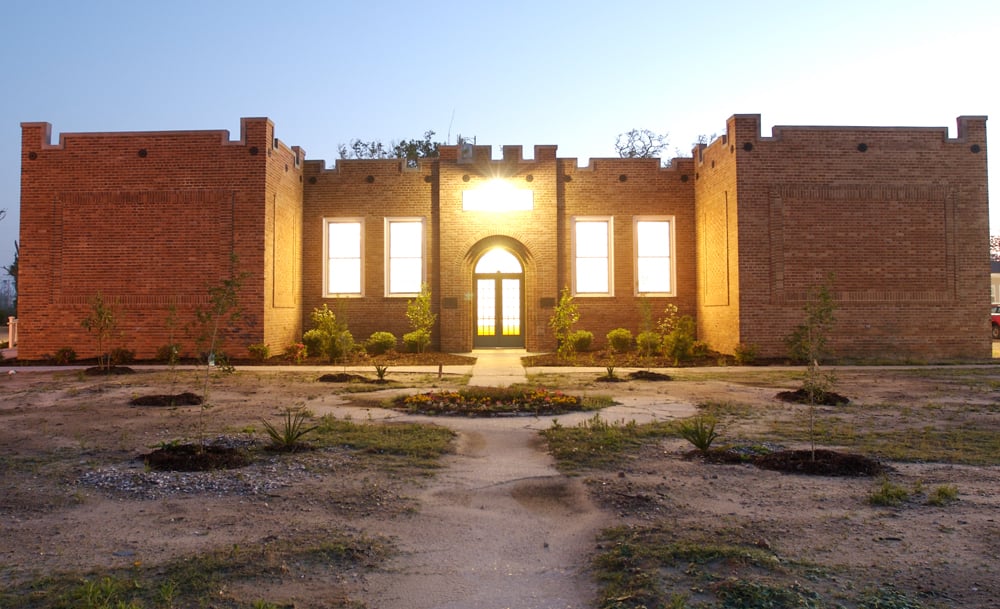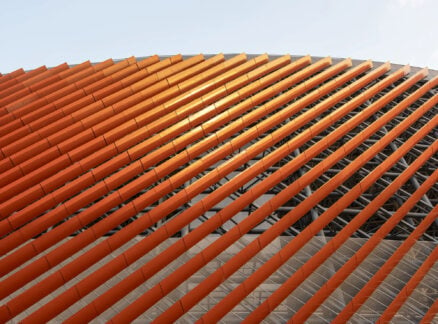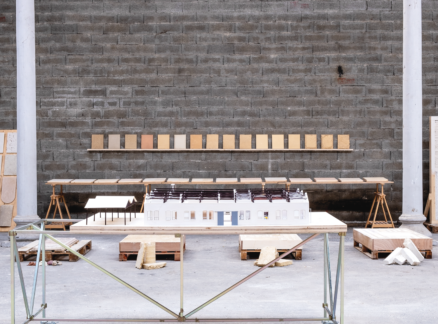
August 19, 2021
Peter MacKeith Organizes a Southern Exhibition at the Venice Biennale
The dean of the Fay Jones School of Architecture and Design at the University of Arkansas gathered up the work of 36 modern architects from eight states for a symposium and a book.

Peter MacKeith is a man with a vision.
Dean and professor of architecture at the Fay Jones School of Architecture and Design at the University of Arkansas since 2014, he wanted to gather modern architects from across the South— to compare notes about their practices.
“I came to know architects beyond Arkansas and came up with the concept— to do a conference and a book,” he says. “I thought it was important to look at the American Southeast—the Atlantic coast and the Gulf Coast.”
He wanted an exhibition too—at the Venice Architecture Biennale 2021. He had experience there, from his time at the Helsinki University of Technology, when in 2012 he curated the Nordic Biennale. “I’d decided to do a group exhibition with 33 firms from Finland, Sweden, and Norway— there were 11 from each country— and I installed that exhibition,” he says.
Today, at Venice’s Palazzo Mora, his vision has been realized. It’s called A South 40: Architecture and Place in the American South. It features work from some of the most progressive architects along and below I-40, the highway slicing east/west across the region.

Perceptions of people and architecture in the South lie somewhere between stereotype and surprise— from sharecroppers to plantations. But they’re perceptions only, MacKeith asserts. “The architecture of the South is not what you think it is,” he says. “It’s more principled and progressive and dedicated to the specifics of the place in which it is constructed. It’s more purposeful.”
To prove it, he’s assembled the work of 36 firms from eight states. On October 6, most will gather in Venice for a live-streamed symposium, just as he envisioned.
Many are practicing what 2020 AIA Gold Medal-winner Marlon Blackwell of Fayetteville calls abstract unions. “It’s making a productive tension between the local and the global or the universal,” he says. “It’s a reductive approach where less can truly be more.”
Among those in the exhibition is North Carolina’s Frank Harmon. He sees similarities among all those participating – from Carolina to Missouri. “All have a pragmatic approach that includes using materials wisely, with buildings that function well to clients’ needs, and pay attention to the site – all in a way that will be recognizable as an aesthetic,” he says.

Weather, climate, and environment— especially heat, humidity, and sea level rise—tie many of the firms’ work together. “We have an average of 60 inches of rain, but we’ve gotten 80 already this year,” says John Anderson, co-founder of the Mississippi-based firm, unabridged Architecture. “And we have a fragile coastline that’s susceptible to hurricanes and storm surges.”
But there’s also a varied topography. “We’re doing a 135,000-square-foot school on a 40-acre site with wetlands on it,” says Victor Vines, president of Vines Architecture in Raleigh. “Between the topography and the wetlands, they’re driving the design and diagram of the building.”
In Louisville, Roberto de Leon of Leon & Primmer Architecture Workshop sees topography as an asset. “It’s about how to negotiate around features,” he says. “It offers opportunities.”
As does this exhibition, which is no one-off affair. “By no means is this a closed circle,” MacKeith says. “It’s an ongoing project for the schools and all participating.”
That means he’s already looking forward to the 2023 Biennale.

filtration, wave attenuation, and habitat. Courtesy unabridged Architecture and Local Office Landscape + Urban Design.
You may also enjoy “The Transformation of Silo City Signals a New Future For Buffalo”
Would you like to comment on this article? Send your thoughts to: [email protected]
Register here for Metropolis’s Think Tank Thursdays and hear what leading firms across North America are thinking and working on today.
Recent Viewpoints
Viewpoints
Sustainability News Updates for Q2 2025





